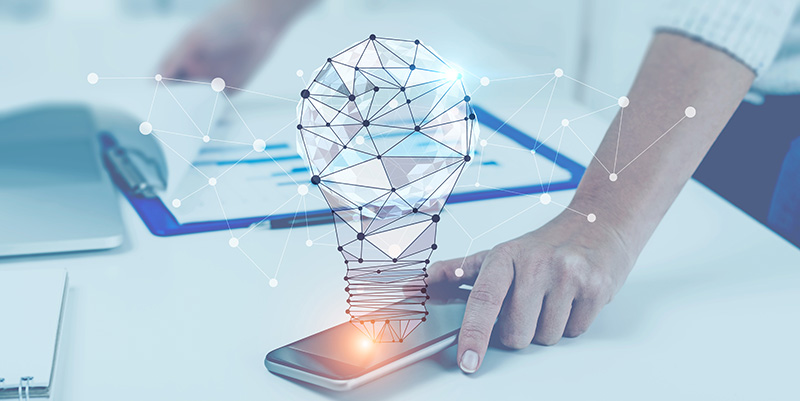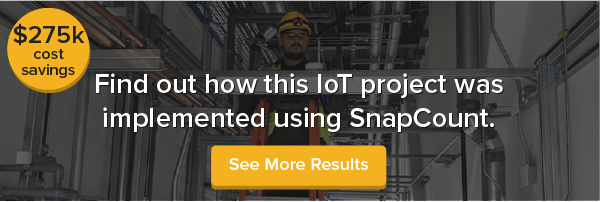
The lighting retrofit industry isn’t just about illumination, or even saving energy. Ultimately, retrofitting is about optimization, helping your clients make the most of their spaces, reducing waste and maximizing resources. That’s why the emerging field of the internet of things (IoT) is such a natural fit for the retrofit industry.
IoT, as Wikipedia defines it, is “the extension of Internet connectivity into physical devices and everyday objects.” A building’s lighting system is an IoT platform waiting to happen – or already happening.
Efficient lighting technology has advanced quickly in recent years, to the point where retrofitters are already finding themselves retrofitting first-generation LEDs – a dwindling slice of an already-small ROI pie. IoT represents an opportunity for lighting retrofitters to take their services to the next step and go beyond the typical ROI conversation with prospects, adding value to lighting projects that will pay off in one year, not five.
If your lighting retrofit business is looking for new opportunities to grow, you should be adding IoT elements into the proposals you’re sending. Here are a few things to be aware of.
1. IoT Is Already Here
IoT is not some far-off techno dream. It’s here now. Businesses are already using IoT to improve their productivity and profitability.
In 2016, LIGHTFAIR® hosted its first IoT & Smart Lighting Forum. An Architectural Lighting article that covered the event noted that major players in the lighting industry – including Current by GE, Philips, and Acuity – had already begun developing IoT platforms. According to the article, the companies presenting at the forum were taking IoT “from what may sound like a far-fetched future to a ubiquitous service that is being deployed today.”
More recently, JPMorgan Chase & Co. has launched a LED retrofitting initiative that will enable the firm to derive 100% of its power from renewable sources by 2020. Chase expects the initiative will also reduce energy consumption by 15 percent at 4,500 branches and will slash lighting-related consumption by half.
2. IoT Can Improve ROI on New LEDs
IoT smart devices can have a profound effect on a building’s energy use. These devices enable data-driven decisions about how, when, and where to activate lights, allowing organizations to optimize their lighting schemes for maximum productivity and the best use of resources.
This is one of the reasons IoT is such a sensible add-on to lighting retrofit projects. The technology can help your clients get closer to their energy-conservation and money-saving goals. It’s really the next stage in the evolution of lighting.
Here are a few examples:
- Sensors can range from simple occupancy sensors that provide data on the number of people in a given space, to temperature sensors that measure heat and cold, to photocells that measure light. The data collected by sensors can be fed back into a centralized IoT platform, which organizations can use to analyze and control their energy use.
- Analog devices, such as doors, can also be connected to data-gathering sensors. For example, a basic on-off sensor can determine whether a door to the outside is open or closed, triggering a decision not to leak air conditioning into the open air.
- Digital timers can keep lights on for a pre-determined length of time.
- Intelligent cameras can track people with greater accuracy than ever before, noting characteristics like gender, age, and clothing, and following people from room to room to avoid double counting them.
A centralized IoT platform can tie all these elements together across spaces and buildings. For instance, an architectural firm might need lighting levels at 60 foot-candles to complete their drawings during the day. In the evening, when the cleaning crew comes in, 20 foot-candles of light might be sufficient. The firm can schedule and execute that lighting regime through a centralized, cloud-based platform.
Another example is daylight harvesting. IoT-based tools can help businesses take advantage of the “free” lighting the sun provides. A sensor could determine whether an employee sitting near a window needs a boost of illumination or not.
3. IoT Can Be More Than Lighting Controls
The internet of things can do so much more than lighting, however, and therein lies the opportunity to expand the value of your retrofitting services.
One promising IoT capability is indoor positioning. Standard GPS-based location systems stop working at the entrance to a building. IoT sensors can pick up where GPS leaves off.
In a retail environment, indoor positioning apps can lead customers directly to the products they’re seeking. And they can encourage additional sales by pointing customers toward related products. (“Oh, you’re looking for peanut butter? Here’s a coupon for jelly and where you can find it, too.”)
Positioning systems can also collect valuable data on how customers navigate retail environments, the displays and products they stop at, and those they overlook.
In an industrial setting, indoor positioning can help workers locate pallets quickly. Being able to find things faster can make a significant difference in any workplace. In hospitals, patient discharges are routinely delayed because staff members can’t locate wheelchairs.
The internet of things can also simplify complicated scheduling tasks like meeting room planning. Have you ever booked a conference room only to have no one show up for the meeting? The room went unused for that block of time, perhaps while another group was forced to huddle within a cramped cubicle. If sensors had been installed in that space, the second group would have known right away the conference room was unoccupied, and they could have jumped in to take your place.
As workforces become more and more distributed (are you working from home as you read this?), IoT platforms can help organizations ensure they’re making the most of every square foot. Empty offices are just a waste of space, light, and energy.
4. The Future of IoT Is Limitless
If you remember when Apple introduced the iPhone in 2007, you might recall there was some question as to what the device was suitable for. What else do you need from a phone other than the ability to make calls? As it turns out, the iPhone, and smartphones in general, have revolutionized how we live our lives. Even Steve Jobs couldn’t have predicted we would be meeting spouses, shooting feature films, getting in shape, and getting serious work done all with the help of our mobile devices.
The humble lighting system can become the iPhone of IoT: the platform upon which countless life- and work-altering innovations are built. It will be exciting to witness the creative new ways people use interconnected everyday devices to improve productivity, conserve energy, and collect meaningful data in the coming years. The potential of IoT is limited only by the imagination of app developers.
5. It All Starts With an Audit (and Pro-Level Lighting Audit Software)
Good lighting design begins with a proper audit, and in the retrofitting business, that means not just tallying up lights, but accounting for all the other elements of a building that play a role in energy use. When you bring IoT into the equation, it means looking out for opportunities to use smart devices to optimize light, space, energy, and productivity. For example:
- Identifying the daylight zones.
- Marking the location of windows, skylights, and side lighting.
- Recording occupancy and scheduling trends.
- Finding out which major assets possess a “flight risk.”
- Learning about the building’s HVAC system.
In short, you need an auditor who will do more than just show up at the facility. You need an experienced auditor who will engage with the teams in charge of controls and IoT, as well as with the prospective customer, to understand the goals of the project so they can collect the most relevant information.
Lighting audit software is essential, as well. A good lighting audit tool (such as SnapCount) can act as a checklist, guiding auditors from room to room, directing them to the details that matter. Software like SnapCount helps auditing teams stay efficient and organized, with a cloud-based, holistic view of the data, accessible through a clean interface.
The best energy audit applications can quickly and easily generate attractive proposals with numbers and infographics that resonate with decision makers. Once you win the job, the software can transition into project management mode, helping teams stay on task with a single reference point for information and communication.
The internet of things is a high-end technical solution, and customers expect a high-end, cutting-edge, professional appearance from their solution providers. If you’re selling IoT but performing your audits with pen and paper and delivering proposals on spreadsheets, what does that say about your company’s capabilities?
Whether you’re selling the latest IoT options or basic LED retrofits, lighting audit software can help your business score more wins with less effort and cost. Learn why by taking a video tour of SnapCount, guided by some of the most successful lighting retrofitters in the industry.






Share this post: